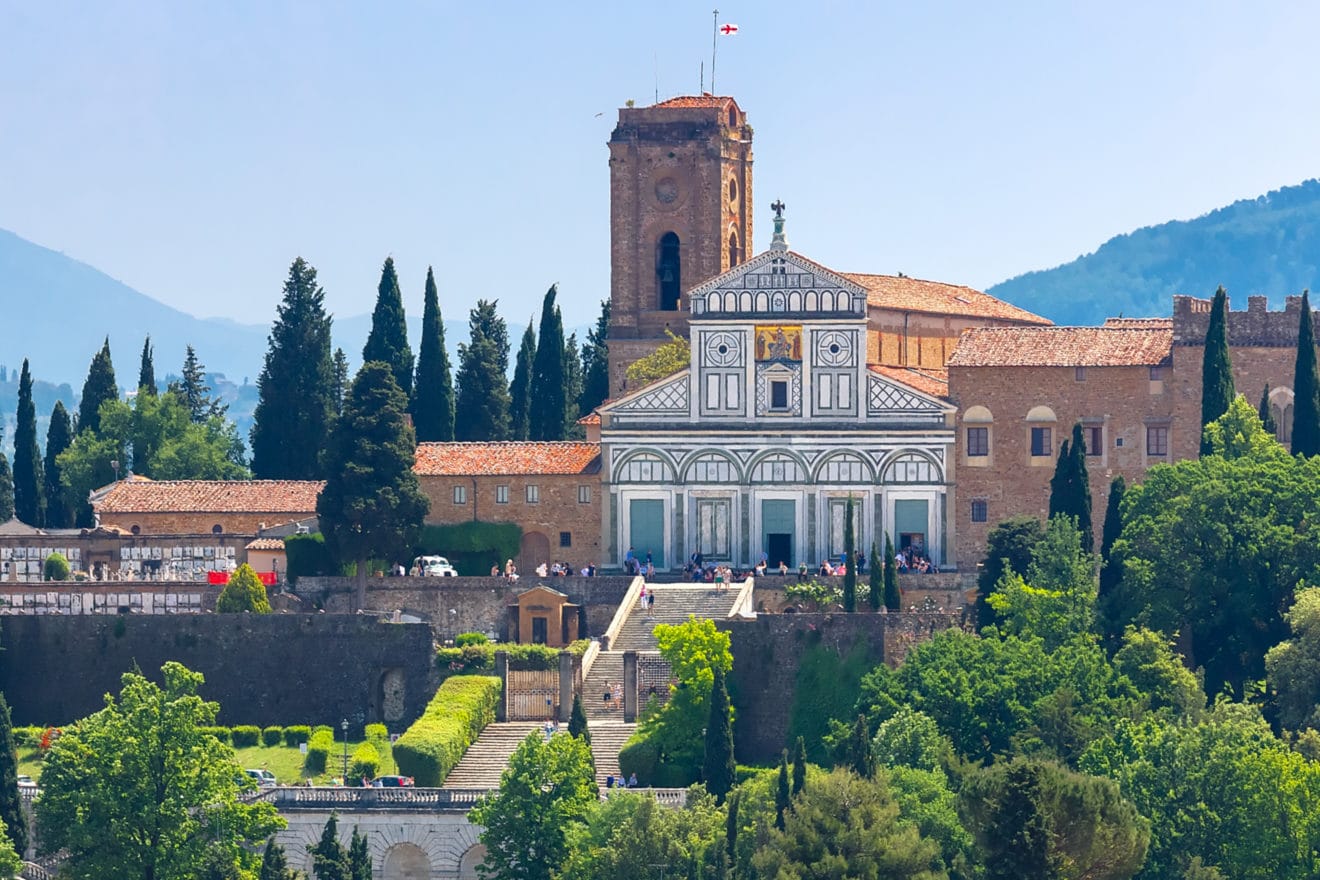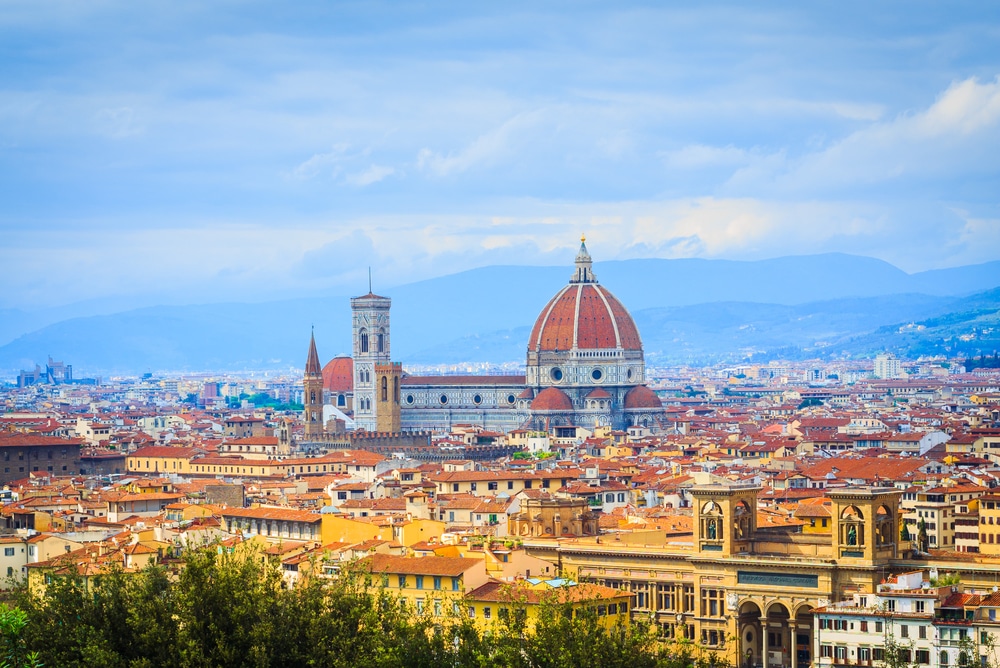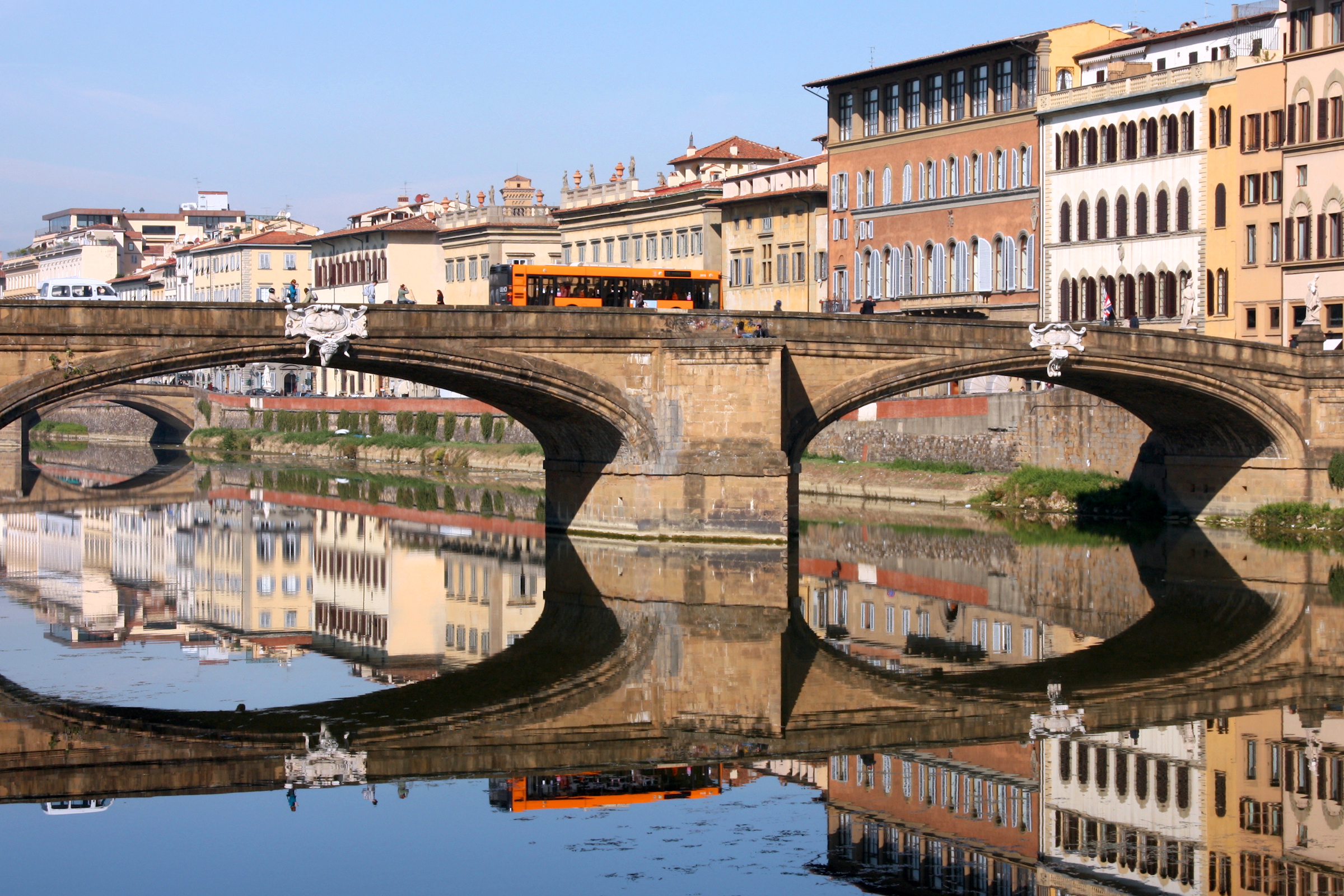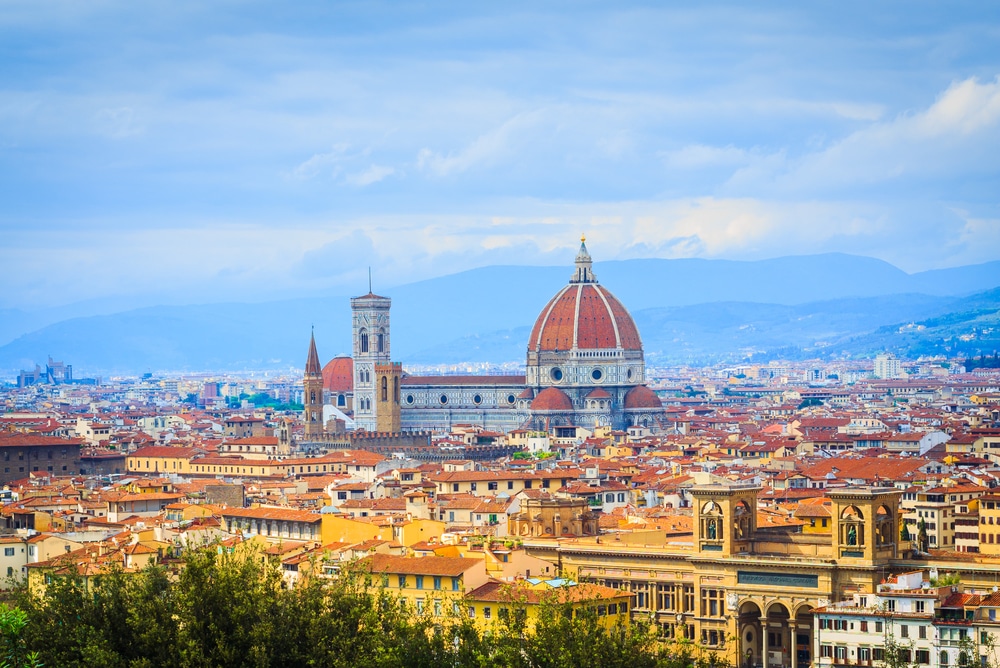Basilika San Miniato al Monte
On a hill above Florence stands the Basilica of San Miniato al Monte. The church, which belongs to the Olivetan abbey of the same name, is one of the most beautiful places of worship in Italy. Above all, the façade of the Basilica of San Miniato al Monte is considered a characteristic work that perfectly embodies the incrustation style of the Florentine Proto-Renaissance. The Pope awarded the church of San Miniato al Monte the honorary title of Basilica minor as an important ecclesiastical building.

Important church building on a hill above Florence
The construction of the church of San Miniato al Monte (St. Minias on the Hill) on the burial place of the Christian martyr St. Minias, a wealthy Armenian, began as early as 1523. According to tradition, Saint Minias was beheaded during the reign of Emperor Decius in 250 and subsequently buried on a hill located in East Oltrano. The campanile of the Basilica of San Miniato al Monte was built by the Italian architect and sculptor Baccio d'Agnolo in 1523 and was only partially completed. An earlier tower, which collapsed in 1499, was to be replaced by the construction of the new campanile.
Basilica with three naves and an unusual structure
The Basilica of San Miniato al Monte belonged to the Cluniac monks before the Olivetan monks established their headquarters there in the second half of the 14th century until 1553. After that, the monks belonging to the Benedictine Congregation of Monte Oliveto returned to San Miniato only in 1924. On the site of the Romanesque church, a Benedictine abbey of the Cluniac reform was founded in 1013. So far, no written sources have been discovered from which to infer the exact start of construction, so dating is based on analysis of architectural forms. Presumably, construction of the church began in the 11th or 12th century.
The date 1207, inscribed in the floor of the basilica, probably indicates the time of completion. In 1553, the Basilica of San Miniato al Monte was converted into a fortress under the reign of ruler Cosimo I. In the 17th century, the church served temporarily as a hospital for plague sufferers and as an asylum for the homeless. The three-aisled basilica with semi-circular apse stands out due to its unusual structure for the central Italian Romanesque style.
Worth seeing crypt with valuable frescoes
The façade, whose cladding consists of white Carrara marble and dark green serpentine, is characterised by the abstract incrustation style of the Florentine Proto-Renaissance. The choir inside the basilica is located above the large crypt on a raised platform. The freestanding Cappella del Crocefisso (Chapel of the Crucifix) was designed by Michelozzo in 1448 and dominates the center of the nave. The oldest part of the Basilica of San Miniato al Monte, whose high altar is said to contain the bones of the martyr Minias, is the crypt. Some evidence led to speculation that the saint's remains were moved to the French city of Metz before the basilica was built. The crypt, which is well worth seeing, houses valuable frescoes by Taddeo Gaddi.
Two chapel interiors are particularly noteworthy for their extremely rich decoration. The barrel-vaulted marble ciborium, commissioned by Piero de Medici from Michelozzo, is in the Cappella del Crocifisso. The sculptural works in the Chapel of the Cardinal of Portugal are from the workshop of Antonio and Bernardo Rossellino. A visit to the Basilica of San Miniato al Monte should be part of any visit to the city, because the church, located on the Monte (hill) behind Piazzale Michelangelo, is one of the most important Romanesque buildings in the city and, together with the monumental cemetery and the Archbishop's Palace, forms an extraordinary complex.





